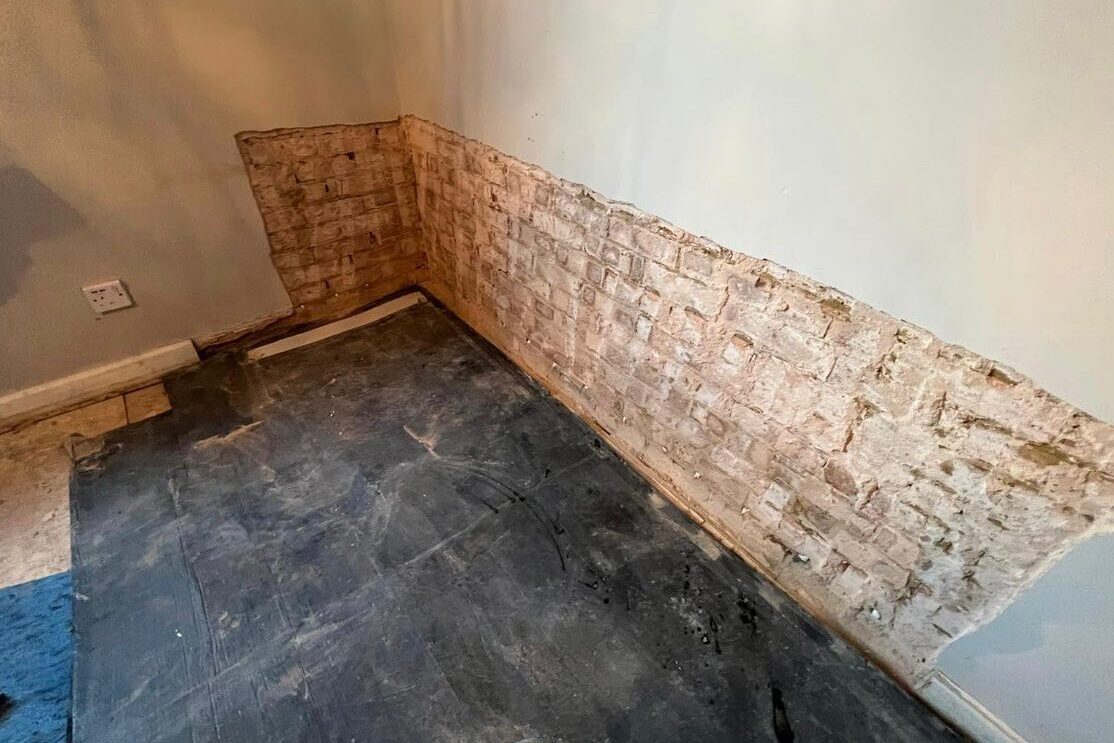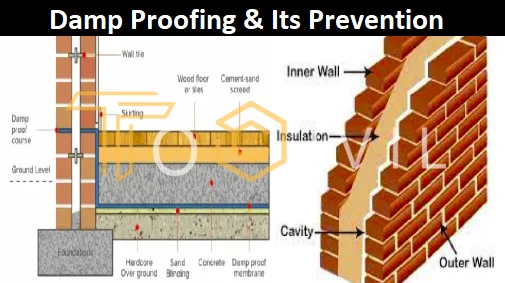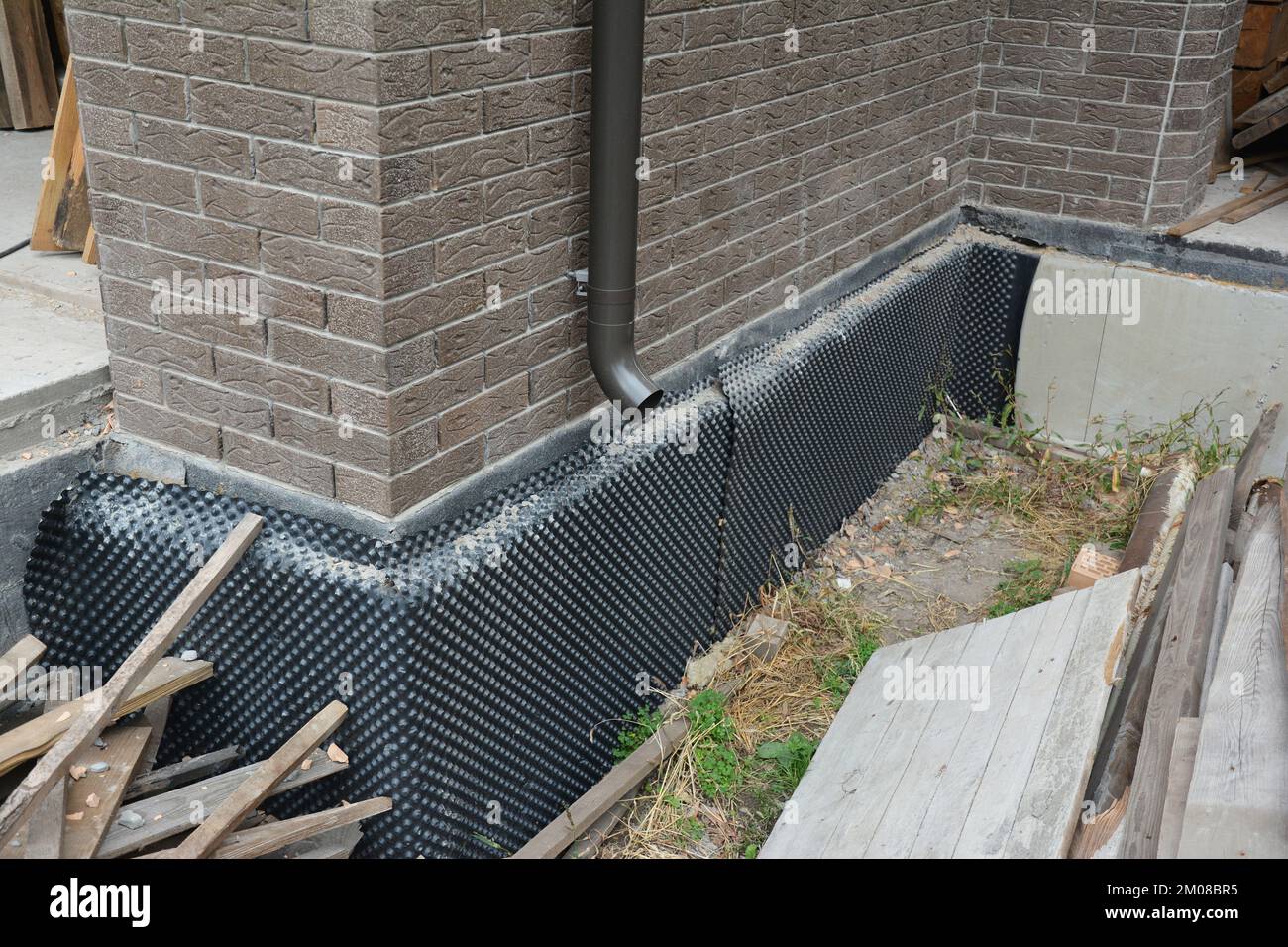Exploring the Numerous Techniques and Solutions for Effective Damp Proofing
Moisture in structures positions substantial difficulties to both architectural stability and interior air quality. Different techniques and solutions have arised to battle this pervasive issue. From typical damp-proof membrane layers to innovative chemical treatments, each technique uses unique advantages. Understanding these choices is necessary for effective moisture control. Selecting the right remedy depends on details structure problems and requirements, prompting more expedition into the most effective wet proofing methods available.
Understanding the Root Causes Of Dampness
Moisture can develop from numerous resources, understanding these reasons is crucial for reliable removal. Generally, dampness originates from three key resources: rising moist, permeating damp, and condensation. Climbing moist occurs when groundwater takes a trip up-wards through permeable materials, such as block or stone, typically due to an absence of an efficient obstacle (damp removal newcastle). Permeating damp is normally brought on by external variables, consisting of roofing system leaks, damaged gutters, or damaged walls, permitting water to infiltrate a home. Condensation, on the other hand, arises from excess moisture airborne, often worsened by inadequate ventilation and temperature level differences, bring about water droplets developing on surfaces. Identifying these underlying concerns is vital, as each sort of wetness calls for a tailored technique for removal. Appropriate assessment aids in figuring out one of the most effective options, ultimately protecting the architectural stability of a structure and enhancing indoor air high quality
Typical Damp-Proof Membrane Layers

Chemical Damp-Proofing Solutions
Chemical damp-proofing solutions provide an ingenious technique to protecting against dampness breach in structures. These techniques commonly entail the application of fluid chemicals that permeate stonework and develop a barrier against rising damp. Frequently made use of chemicals consist of silanes, siloxanes, and other water-repellent agents that respond with surface materials to create a hydrophobic layer.The application procedure typically calls for exploration openings into the walls, infusing the chemical remedy, and enabling it to treat. This method is specifically useful for older frameworks where standard damp-proof membranes may be unwise. Chemical damp-proofing can be much less turbulent and extra affordable than extensive restoration projects.While effective, these remedies depend on appropriate application and ecological problems for peak performance. mould removal newcastle. Regular maintenance and surveillance are crucial to ensure the long life of the damp-proofing treatment. On the whole, chemical damp-proofing stands for a flexible alternative for protecting structures versus moisture-related damage
Dental Caries Wall Building And Construction Techniques
Tooth cavity wall surface building and construction methods offer countless benefits, particularly in wetness control and power performance. By integrating an air gap in between 2 layers of stonework, these wall surfaces properly minimize water access while improving insulation. This mix not just protects structures from moisture but likewise contributes to lowered energy usage.
Advantages of Dental Caries Wall Surfaces
When taking into consideration effective damp proofing methods, the advantages of tooth cavity walls attract attention plainly. Dental caries wall surfaces consist of two separate layers, developing an air void that efficiently decreases wetness penetration. This style lessens the threat of wetness, as the outer wall surface works as an obstacle versus rainfall and water access. Furthermore, tooth cavity wall surfaces improve thermal insulation, which adds to energy efficiency by decreasing warm loss. They likewise offer sound insulation, aiding to develop a quieter interior environment. Furthermore, the air space enables air flow, which assists in wetness control and minimizes the chance of mold growth. These advantages not only boost the overall convenience of a structure however likewise contribute to its longevity and structural honesty.
Wetness Control Approaches
Effective wetness control strategies are crucial in tooth cavity wall surface construction to ensure lasting defense versus wetness. One primary technique entails the consolidation of weep openings, which promote water drainage from the tooth cavity, avoiding buildup. Furthermore, making use of breathable membranes can assist take care of wetness degrees while permitting caught vapor to run away. Proper positioning of insulation is additionally essential, as it needs to not obstruct drain paths. Making certain that the outer leaves of the cavity wall are constructed with waterproof products boosts total resilience. Regular upkeep checks are important to determine any blockages or damages early, safeguarding the structure's stability. Eventually, a mix of these strategies creates a durable protection versus wetness breach in dental caries wall surfaces.
Insulation and Power Effectiveness
Insulation plays an essential duty in boosting power performance within dental caries wall building and construction. By including shielding products, these wall surfaces produce a thermal barrier that reduces heat loss and reduces energy usage. Reliable insulation not just assists preserve a stable indoor temperature yet additionally minimizes the threat of dampness, as it avoids condensation within the wall dental caries. Different methods, such as the use of inflexible foam boards or mineral woollen, can be utilized to achieve optimal insulation efficiency. In addition, appropriate installation is necessary to assure that voids and gaps are decreased, which can or else endanger power efficiency. Ultimately, a well-insulated dental caries wall adds considerably to general sustainability and decreases home heating and air conditioning expenses for property owners.
External Damp Proofing Methods
Exterior wet proofing approaches are vital for safeguarding structures from dampness seepage. Two reliable methods include the application of water resistant membrane layers and the installation of French drains pipes. These solutions assist minimize water build-up and preserve the stability of structures.
Waterproof Membrane Layer Application
While numerous techniques exist for preventing dampness ingress, the application of water-proof membranes stays a very efficient exterior wet proofing technique. These membrane layers are usually made from products such as polyethylene, rubber, or modified bitumen, giving a robust obstacle versus water infiltration. The installation process entails using the membrane to the outside surfaces of wall surfaces or foundations, guaranteeing total protection to stop leaks. Correct adhesion and securing at joints are vital to making best use of effectiveness. Waterproof membranes can be applied in various forms, including fluid coatings and sheet membranes, enabling for versatility based on the particular requirements of the structure. This technique not only shields structures from moisture however likewise improves their durability and structural stability.
French Drain Installation
One efficient approach for taking care of groundwater and preventing moisture build-up around a structure's structure is the installation of a French drainpipe. This drainage system contains a trench full of crushed rock and a perforated pipeline that reroutes surface water far from the structure. Correct installment needs cautious planning, guaranteeing that the drain inclines far from the structure to assist in ideal water circulation. Furthermore, the place of the drain is important; it should be positioned in locations susceptible to pooling or excess dampness. Routine upkeep, including clearing up particles from the gravel and making certain the pipe continues to be unhampered, is necessary for long-term effectiveness. Eventually, a well-installed French drain can substantially minimize the risk of water-related concerns in basements and structures.
Interior Waterproofing Strategies
Interior waterproofing strategies are crucial for protecting a structure's inside from wetness infiltration and possible water damages. These techniques here normally entail the application of specific products and techniques created to develop a dampness barrier within the framework. One common strategy is using waterproof layers or sealers on walls and floors, which protect against moisture from permeating surfaces.Additionally, mounting indoor drainage systems, such as sump pumps, can successfully handle water buildup in basements and crawl spaces. One more method includes using vapor barriers, which are set up to hinder wetness movement from the ground right into living spaces.Moreover, addressing any type of cracks or voids in walls or structures with proper sealants guarantees an extensive protection against water breach. By applying these interior waterproofing methods, homeowner can substantially lower the threat of mold and mildew development, architectural damages, and various other moisture-related problems. Correct implementation of these techniques is necessary for lasting protection and building integrity.
Regular Maintenance and Evaluation Practices
Routine maintenance and evaluation methods are essential for assuring the long-term effectiveness of damp proofing remedies in any type of building. Routine checks enable homeowner to identify very early indicators of dampness breach, such as peeling off paint, mold development, and mildewy odors. These signs can signal underlying issues that require immediate attention.Inspections should be conducted a minimum of yearly, focusing on vulnerable locations like cellars, crawl rooms, and outside walls. Throughout these evaluations, property proprietors need to take a look at sealants, water drainage systems, and ventilation to verify they operate correctly.Additionally, preserving rain gutters and downspouts is important, as blocked systems can bring about water accumulation near the structure. Implementing a regular maintenance timetable, together with prompt repair services, can considerably expand the life expectancy of moist proofing steps and protect the structural honesty of the building. Proactive actions ultimately add to the overall health and wellness and safety and security of the living environment.
Often Asked Concerns
For How Long Does Damp Proofing Normally Last?
The duration of damp proofing efficiency differs, typically lasting in between 20 to half a century. Variables such as application quality, environmental problems, and upkeep techniques considerably affect the longevity of the moist proofing therapy.

Can I Damp Proof My Home Myself?
The private contemplated the feasibility of do it yourself damp proofing. With correct research study and the ideal products, it is possible. However, they also identified the value of expert assistance to ensure resilient performance and avoid future concerns.
What Are the Signs of Ineffective Damp Proofing?
Indicators of inadequate wet proofing include relentless musty odors, visible mold growth, peeling off paint, damp patches on walls, and timber decay - damp proofing newcastle. Home owners ought to address these issues immediately to avoid additional damages and wellness problems
Does Damp Proofing Affect Indoor Air Quality?

Just How Much Does Expert Damp Proofing Price?
Expert damp proofing prices differ substantially, normally varying from $1,000 to $5,000 depending on the residential or commercial property's size, the extent of the moist concern, and chosen techniques. Each scenario requires a tailored evaluation for exact prices. Typically, wetness originates from 3 main sources: climbing moist, penetrating moist, and condensation. When thinking about effective moist proofing techniques, the benefits of dental caries wall surfaces stand out prominently. External moist proofing techniques are crucial for protecting structures from moisture infiltration. While different techniques exist for preventing wetness ingress, the application of water resistant membrane layers continues to be an extremely reliable external damp proofing technique. Signs of ineffective damp proofing include consistent moldy smells, noticeable mold and mildew development, peeling off paint, wet spots on walls, and wood decay.